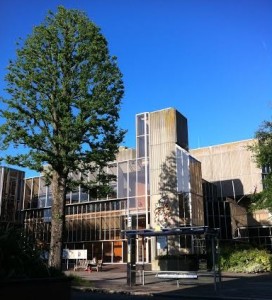Exclusive report
The “coalition” deal between Labour and the Greens to run Brighton and Hove City Council can be revealed today.
The two parties have repeatedly denied in recent weeks and months that they agreed a “coalition” deal last year to run the council together.
But both parties have also repeatedly rejected requests to publish their joint working arrangements.
This is despite a promise “to become more inclusive and transparent” in a press release issued jointly by the parties shortly after the local elections in May last year.
The press release set out an overview of plans to co-operate on housing and homelessness, climate change, austerity and promoting diversity, inclusion and equalities.
But a “memorandum of understanding” agreed by Labour and the Greens sets out the working arrangements that, the Conservatives say, unfairly excludes their party from a key part in democratic decision-making.
And even some Green and Labour councillors have signalled unease at the extent of formal co-operation.
One councillor said that the deal might not amount to a full coalition but the public and political opponents could be forgiven for describing it in that way.
So what does it say?
The opening section set out the background, including how the deal was reached, and the broad policy areas where the two parties planned to work more closely together.
It said: “Given that over 70 per cent of residents voted for either Labour or Green Party candidates on their unprecedentedly convergent manifesto commitments, we have a unique opportunity to make a huge positive impact on the city in areas which both parties support.
“There is therefore a desire on the part of Labour and Green councillors to work more closely together to achieve change.
“This will demonstrate a positive commitment to the city that the Labour and Green groups’ focus is on delivering progressive policy solutions.
“In negotiations held on 14 and 15 May 2019 between Nancy Platts, Dan Yates, Jo Viner and Jon Rogers for the Labour group of councillors and Phélim Mac Cafferty, Tom Druitt, Sue Shanks, Pete West and Siriol Hugh-Jones for the Green group of councillors, the parties agreed that
- Labour group would form the administration
- Green group would form the official opposition but that
- the parties would work together to develop policy in key areas where their election manifestos overlapped
…
“These areas are initially
- housing and homelessness;
- climate change
- austerity
- city of sanctuary and work on diversity, inclusion and equalities
…
“The opportunity to work together on other policy areas remains. Both groups are open to considering how.
“This memorandum of understanding sets out the details of how the parties will work together in these areas.”
The next sections of the document set out the “aims and objectives” and the “working processes” of the agreement, reflecting Labour’s position as the larger of the two parties at the time.
It said: “The overarching aim of this arrangement is to work together proactively and with all the city’s interested groups
- to change the nature of council decision-making to make it more inclusive and transparent as well as more collaborative
- to demonstrate a new politics that is focused on co-operation and collaboration, a politics that seeks to fundamentally change the perception of local government as progressive politicians are seen to work together for the good of the city
- to drive positive change in the areas identified for the benefit of the city’s residents
- to set up a Climate Assembly and an ambitious programme of projects to inform the policy and implementation intended to enable the city to be net zero carbon by 2030
…
“Labour group undertakes to seek early input (ie, before any such proposals go before the Constitutional Working Group) from Green group on any plans to revise
- the governance and committee structure
- working groups
- reintroduction of regeneration major project boards
…
“In the working of the Housing Committee, the Environment, Transport and Sustainability Committee and the Tourism, Equalities, Communities and Culture Committee, the parties agree to adopt the following working mechanism.
“Where policy positions coincide with the areas identified, Labour will seek the Green group’s input into the Corporate Plan which sets the agenda for the current Labour administration for 2019-23 and that, with the exception of the agreed policy areas, the rest of the Corporate Plan shall be proposed by the (Labour) administration.
“The Labour group’s chair of that committee shall invite the Green group’s spokesperson to a meeting to discuss planned reports or areas of work that align (with the areas identified) in time for any changes to be communicated to officers.
“These meetings are regarded by both parties as being confidential unless otherwise agreed and any council papers or documents shared in said meetings shall be treated as confidential and shall not be released or the information used for any public purpose without the express agreement of the relevant chair.
“Both parties will endeavour to work collaboratively as follows
- the Labour group will seek early input from the Green group on any group and structure revisions and
- the Green group will endeavour to give the Labour group early notice of amendments, notices of motion and urgency committees on areas of collaboration
- where possible, Green group amendments and ideas shall be incorporated into the main report with credit shared for positive joint working
- to bring forward shared resolutions where possible
- if gaps in policy are unresolved, the two groups will seek to work together to provide solutions
…
“The parties agree to set up a cross-party Climate Assembly working group to drive the organisation of a Climate Assembly on climate change.
“The initial timeframe for these activities will be the period until the end of the current administration.
“Activities will be reviewed at monthly meetings … to ensure that they are being delivered as agreed and that they are having the intended impact.
“The parties resolve to work together in a spirit of mutual respect and ensure good communication in the spirit of this agreement.”

The next sections set out more detail about monitoring and disputes. They said: “The parties undertake to set up a monitoring working group comprising nominated individuals from Labour and from the Green Party, including the two party leaders.
“This group will, until further notice, meet at least once a month for the purpose of information-sharing and ongoing monitoring, with the aim of ensuring accountability and performance against milestones.
“Substitutes can be agreed for this meeting where others cannot attend, to ensure that meetings can still go ahead.
“This monitoring group will review the working arrangements set out in this memorandum at least annually in order to ensure the current terms are working appropriately and to identify whether they can be expanded to create further collaboration.
“The working group will co-ordinate the monitoring and report back to their respective parties.
“Should either party fail to comply with any clause of this memorandum of understanding, the other party may convene a special meeting of the monitoring working group with a view to resolving the dispute.
“Should either party not be satisfied with the outcome of such meeting it may unilaterally withdraw from this arrangement.”

Two sections near the end of the document dealt with confidentiality and communications. They said: “Unless otherwise agreed elsewhere in this memorandum, the parties agree to keep the content of any monitoring or negotiation meetings by the working group confidential.
“Where the parties agree to release any information about these meetings they will do so sensitively and collaboratively and will agree this in advance.
“In covering issues (in the areas identified), party spokespersons are offered the opportunity to contribute to council communications in which Labour committee chairs provide lead comments and Green group spokespersons contribute comments.
“This document, or a version of the same, should be shared with the executive leadership team and head of communications and other identified officers to facilitate their understanding of the relationship between the two parties.”
The document ended with a “disclaimer” which said: “It should be noted that by signing this document or by working together as specified above, the parties are not committing to legally binding obligations.
“The parties will remain independent of each other. More specifically, this arrangement does not create a coalition or confidence and supply agreement between the parties.
“Their collaboration under this memorandum will be limited to the areas specified … and neither party will be authorised to enter into a commitment for or on behalf of the other.”

One councillor said that the agreement to work more closely together reflected in part the common ground in the pre-election promises of Labour and the Greens last year.
Neither party won a majority of the 54 seats on the council in the local elections held in May 2019 but Labour won 20 seats and the Greens 19.
Two Labour councillors have since become independents, leaving the Greens as the largest party.
The Greens took over the political administration of the council in the summer and the agreement has continued along the same lines as before.
But another reason for closer working is the criticism contained in a peer review report in 2017, commissioned by the council, which described the current “committee system” as not fit for purpose.
The Local Government Association (LGA), which carried out the review, said: “There is a view that the council’s committee system is not fit for purpose and does not allow for timely decision-making.”

The system of decision-making by committee has been restored twice since the council was created in the 1990s – most recently in 2012 during the first Green administration.
The change followed complaints that the “cabinet system” sidelined most councillors, especially those from opposition parties.
However, since 2003, when the number of seats was reduced from 78 to 54, no party has managed to secure a majority and overall control of the council.
This has made it harder for the largest party to govern with any degree of certainty unlike under the cabinet system which was almost universally adopted up and down the country in the first years of this century.
The 2017 review recommended a “re-set” in Brighton and Hove. What a “re-set” might involve was not explicitly spelt out but some took it to mean that the council should adopt the cabinet system again or even consider having an elected mayor.
In contrast, a previous peer review praised the way that the committee system worked in Brighton and Hove – and a growing number of other councils have scrapped cabinets and revived decision-making by committee.

The government has been keen to encourage councils or more commonly groups of councils to concentrate decision-making in the hands of one person – an elected mayor.
A referendum in Brighton and Hove in 2001 overwhelmingly rejected the idea, with 62 per cent voting against it.
If the proposal for an elected mayor were to be revived, it would almost certainly mean having an elected mayor for the wider Greater Brighton city region where the Conservatives dominate.
But for now, the Conservatives in Brighton and Hove remain the smallest of the three parties with 12 seats and frustrated by what they regard as the Green and Labour coalition.









It’s all too cosy, democracy works with checks and balances between a governing party and official opposition – we simply do not get that in Brighton and Hove. As a Labour voter I am not happy with this ‘memorandum of understanding’. Yes it’s good that some consensus can be found but it should be done on a case by case basis.
Wow! Is it April 1st?
This is democracy?
Really?
SO! at last the cat’s out of the bag, with the COALITION being forced into admitting what I (and doubtless many others) have known from the outset—that the two REGRESSIVE Parties involved have CONSPIRED against DEMOCRACY with their dirty, filthy, squalid deal.
But mark my words, neither History NOR the Electorate will forgive them for their wicked work
Blimey! I reached for the nearest lamp post when I saw the Labour and Tory councillors collaborate to ignore/reject the officer and Green Chair recommendation in March TECC meeting: the petty Quisling Tory and Labour councillors chose instead to evict all long-term beach chalets tenants … and without any legal advice…and the Committee had the alter its decision to say “subject to it’s legality”… so much to any secret deal between Greens and Labour …